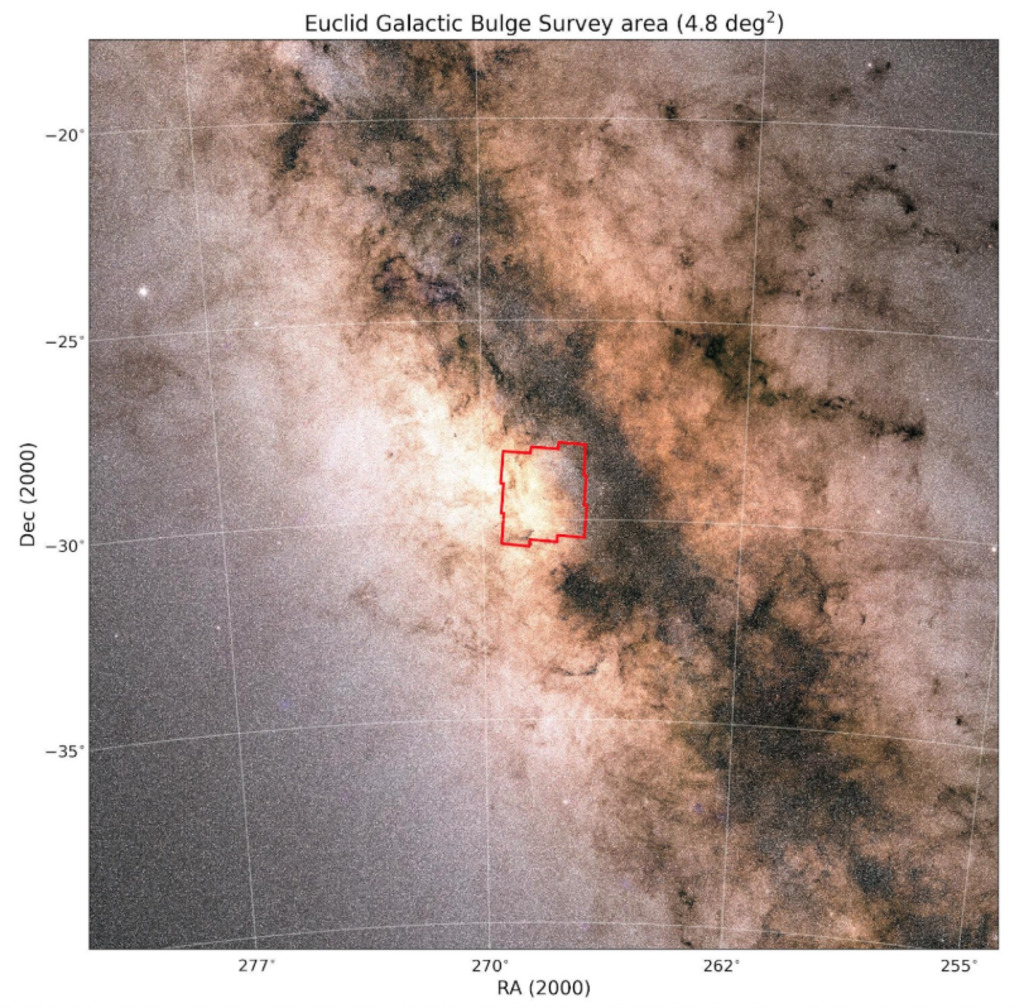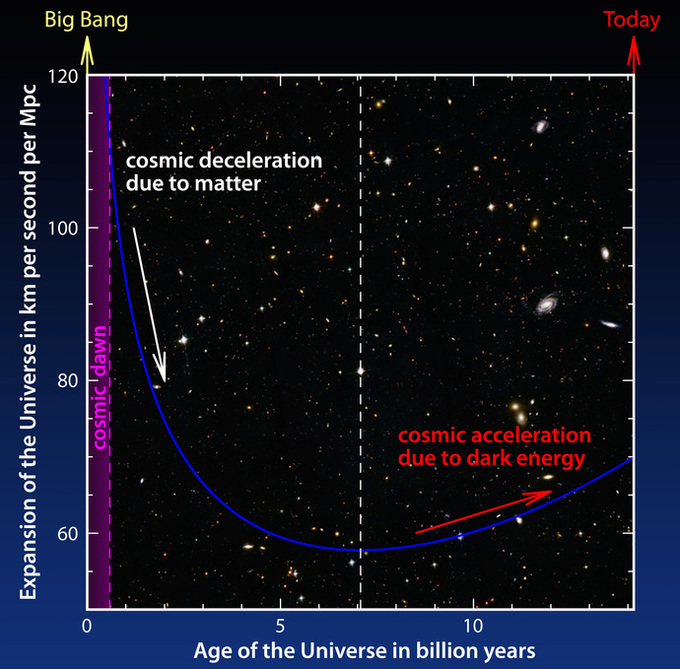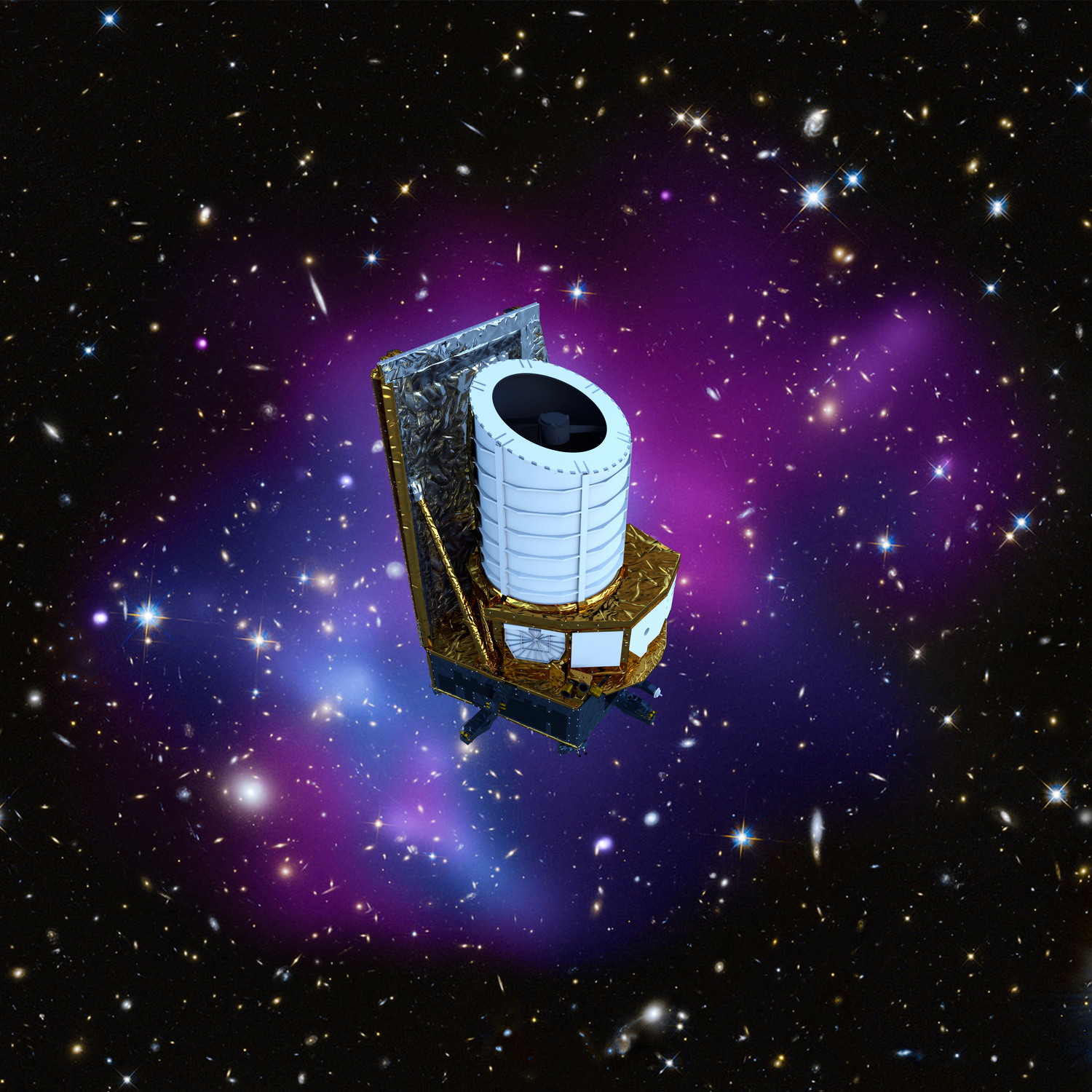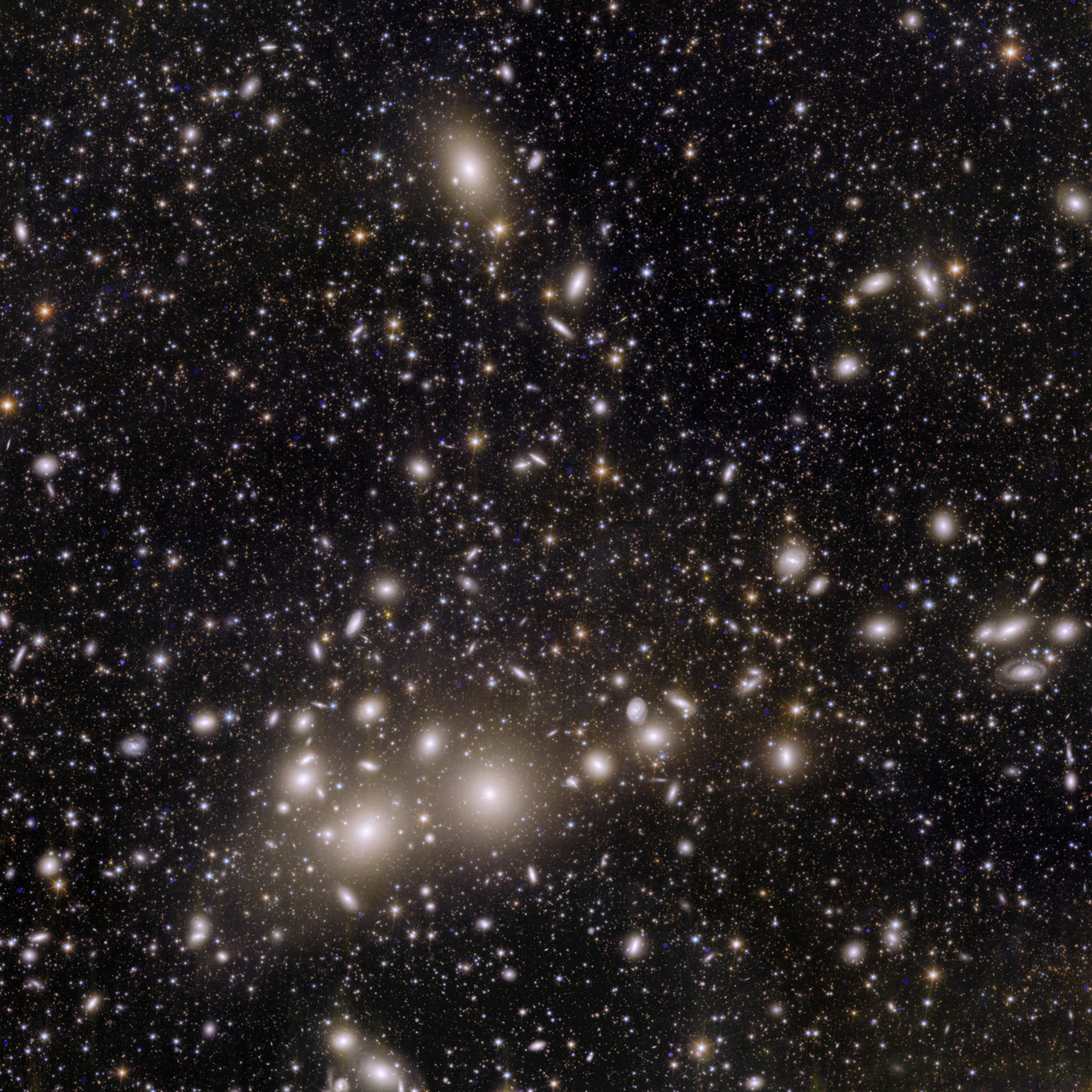Euclid is a European Space Agency (ESA) space mission with NASA participation, to study the geometry and nature of the dark Universe. Euclid will carry out a six-year survey of a third of the sky in the optical and near-infrared. It will measure galaxies out to distances corresponding to a look-back time of ~10 billion years. Euclid was launched on July 1, 2023. Well-characterized and validated Euclid data will be publicly released within about 2 years of acquisition.
Euclid NASA Science Center at IPAC (ENSCI) has been established by NASA, in order to support US-based investigations using Euclid data. ENSCI is part of the Euclid Consortium’s Science Ground Segment, providing algorithm and software development, participating in data quality assurance, and performing data processing. In addition, ENSCI supports the US research community by providing expert insight into the Euclid surveys, data processes, calibration, and products.







